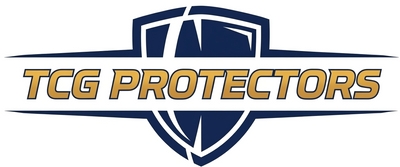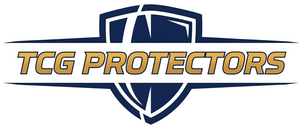Every Magic: The Gathering player is familiar with triggered abilities. They are the backbone of countless strategies, the "when," "whenever," and "at" clauses that turn a static board state into a dynamic engine of value. A creature enters the battlefield, and you gain a life. An artifact is sacrificed, and you draw a card. These cause-and-effect interactions are fundamental to the game.
But what happens when the cause creates a cascade of effects? What happens when a single game event—like the beginning of your combat step or multiple creatures entering the battlefield at once—causes three, four, or even five different abilities to trigger simultaneously?
This is where many players move from a comfortable understanding of the rules into a complex and often confusing territory. The resolution of these triggers is not random. It is governed by a precise set of rules that gives players a remarkable degree of control over the outcome of their turn. The process of ordering these simultaneous triggers on the stack is a skill, and mastering it is a significant step towards advanced strategic play. It's the difference between letting your value engine run on autopilot and fine-tuning it to extract every last drop of advantage.
This guide will demystify the art of stacking triggers. We will break down the APNAP rule as it applies to simultaneous events, explore the strategic nuances of ordering your own triggers for maximum effect, and delve into complex corner cases that can separate a win from a loss.
The Foundation: All Triggers Use the Stack

Before we dive into simultaneous triggers, we must remember the foundational rule: all triggered abilities use the stack. When an ability triggers, it does not resolve immediately. It is placed on the stack, and just like a spell, it can be responded to by all players before it resolves.
This is a crucial concept. If you control a ("Whenever another creature dies, target player loses 1 life and you gain 1 life") and a creature dies, the life loss/gain is not instantaneous. The trigger goes on the stack. This gives your opponent a window to respond, perhaps by giving their creature indestructible to save it from a board wipe, or by using an ability to gain life before your trigger resolves.
When the Dam Breaks: Handling Simultaneous Triggers

The core of the issue arises when a single event causes multiple abilities to trigger at the same time. A common example is at the beginning of your upkeep, where you might control an enchantment that creates a token, an artifact that lets you scry, and a creature that puts a +1/+1 counter on itself. All three abilities want to happen at once. How does the game handle this?
The process is governed by two key principles: APNAP (Active Player, Non-Active Player) and player choice.
Step 1: The Active Player Stacks Their Triggers The Active Player (AP)—the player whose turn it is—gathers all of the triggered abilities they control that have just triggered. They then place them onto the stack in any order they choose. This choice is a critical strategic decision.
Step 2: The Non-Active Player Stacks Their Triggers Next, the Non-Active Player (NAP) gathers all of their triggered abilities that have just triggered. They then place them onto the stack in any order they choose. The NAP's triggers will always go on top of the AP's triggers.
Step 3: Resolution (Last-In, First-Out) Once all triggers from all players have been placed on the stack, the stack begins to resolve as normal, following the "Last-In, First-Out" (LIFO) rule. This means that the NAP's triggers will always resolve before the AP's triggers.
Strategic Ordering: Making the Right Choice

The ability for a player to order their own triggers is not just a procedural rule; it's a potent strategic tool. The order in which you stack your triggers can have a dramatic impact on the outcome. Let's explore some common scenarios.
Scenario 1: The "Draw Before You Decide" Principle
You control two enchantments: ("Whenever a creature you control dies, each opponent loses 1 life") and ("Whenever a creature you control dies, you gain 1 life and draw a card"). You sacrifice one of your creatures. Both abilities trigger simultaneously.
-
The Wrong Order: You stack the (draw) trigger first, then the (drain) trigger on top. The drain resolves first, your opponent loses 1 life. Then the draw trigger resolves, and you draw a card. This is fine, but not optimal.
-
The Right Order: You stack the (drain) trigger first, then the (draw) trigger on top. The draw trigger resolves first. You draw a new card. Now, with more information in hand, you can make a better decision. Perhaps the card you drew is an instant you can now cast before the drain trigger resolves. By drawing first, you maximize your options. As a general rule, if you have triggers that draw cards and triggers that have other effects, you almost always want to stack the draw triggers to resolve first.
Scenario 2: Creating Targets and Fulfilling Conditions
You control ("At the beginning of combat on your turn, put a +1/+1 counter on target creature you control") and an enchantment that says, "At the beginning of combat on your turn, create a 1/1 Soldier creature token."
-
The Wrong Order: You stack the "create a token" trigger first, then the trigger on top. The Aspirant's trigger resolves first. You must choose a target for the counter. The Soldier token does not exist yet, so you must put the counter on one of your existing creatures. Then, the other trigger resolves, and you create a 1/1 Soldier.
-
The Right Order: You stack the trigger first, then the "create a token" trigger on top. The token trigger resolves first. You create a 1/1 Soldier. Now, the Aspirant's trigger resolves. You now have an additional option: you can choose to put the +1/+1 counter on the brand-new Soldier token. By ordering your triggers correctly, you created a target for one of your abilities.
Advanced Concepts: Corner Cases and Complexities

"May" Abilities vs. Mandatory Triggers
Some triggers are optional, using the word "may." For example, "At the beginning of your upkeep, you may draw a card. If you do, you lose 1 life." Others are mandatory: "At the beginning of your upkeep, you lose 1 life." When stacking triggers, you must put all mandatory triggers on the stack. For "may" abilities, you choose whether or not to put them on the stack at all. If you do, you don't make the choice of whether to perform the action until the ability resolves.
Intervening "If" Clauses
This is one of the most complex rules regarding triggers. Some triggers have a condition that is checked twice: once to see if the ability triggers at all, and a second time upon resolution. These are called "intervening 'if' clauses," and they are written as "When/Whenever/At [trigger event], if [condition], [effect]."
For example, consider the card . Its ability reads, "When Guardian of Faith enters the battlefield, if you cast it, exile any number of other target creatures you control."
If you put onto the battlefield without casting it (perhaps with a reanimation spell), the ability doesn't trigger at all. If you do cast it, the ability triggers. However, if your opponent responds to the trigger by countering the spell, when the trigger goes to resolve, the game checks the "if you cast it" condition again. Since the spell was countered and didn't resolve, the condition is no longer true, and the trigger does nothing.
Conclusion: The Conductor of Your Orchestra
Your triggered abilities are like an orchestra, and you are the conductor. When a game event happens, each of your permanents is ready to play its note. A novice player lets them all play at once, creating a functional but unrefined sound. An expert player understands the score. They know which instrument needs to be heard first to set the stage for the others.
Start paying close attention to your triggers. When multiple abilities trigger, pause the game and think. Announce to your opponent, "These three things trigger. I am stacking them in this order." This deliberate practice will transform a confusing mess of effects into a precise chain of command. By mastering the art of stacking your triggers, you take direct control over your deck's engine, ensuring that your symphony of value plays out exactly as you composed it.














Leave a comment